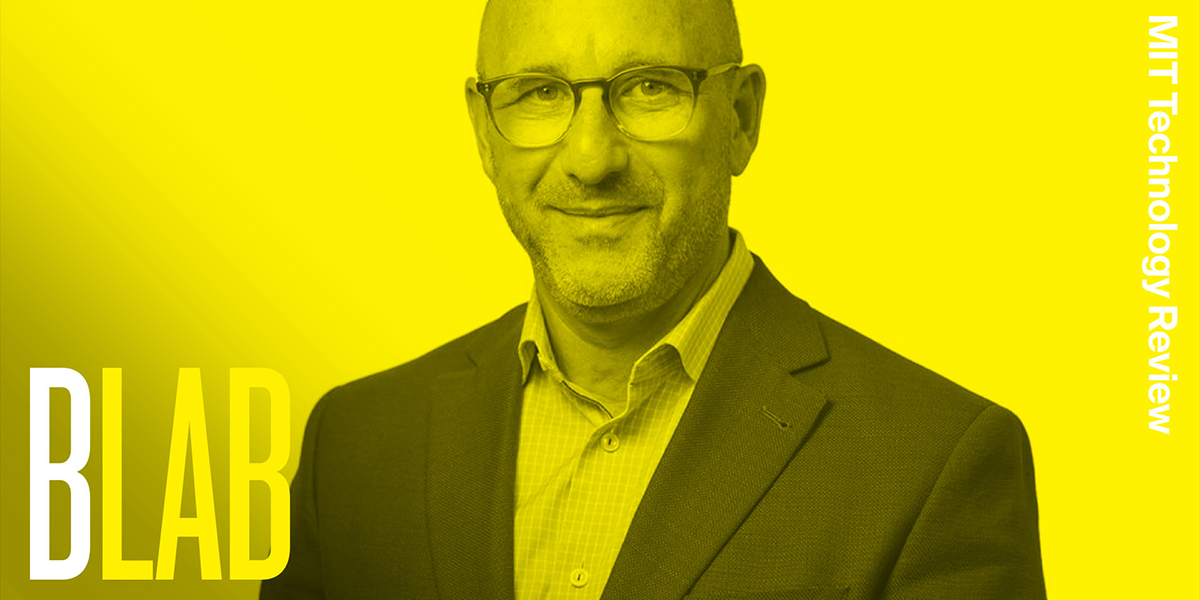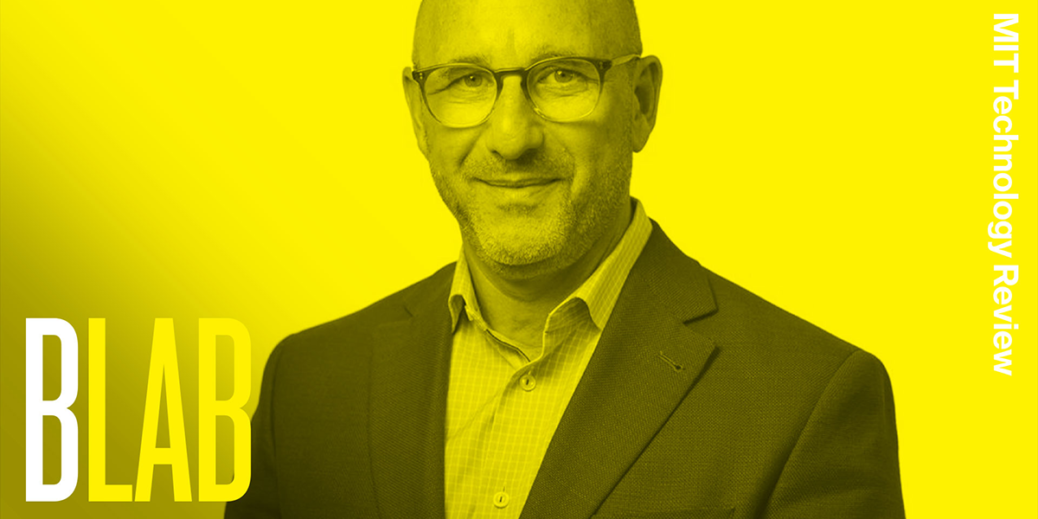
Quoting Vladimir Lenin, Bill Kanarick describes the tectonic industry shifts brought on by the pandemic: “There are decades where nothing happens, and there are weeks where decades happen.” After months of hunkering down at home, consumers got used to online shopping, telehealth doctor’s appointments and contactless and curbside pickup, effectively doubling e-commerce sales in the last 18 months.
“So just in a one-year period, what you saw was the intensification of commitment to an investment in digital transformation driven by the pandemic in part,” says Kanarick, EY’s global chief transformation architect for consulting. “Because you had to have a distributed workforce, you had to better meet the customer where the customer needed to be met.”
These new consumerist practices are here to stay, Kanarick predicts—and that means businesses have to reinvent themselves. He discusses how companies are rising to the challenge of new consumer needs and differentiates businesses that will thrive from those that will struggle to survive.
“You have to choose to commit to pursue a different future,” says Kanarick. “There’s no transformation effort on the planet that doesn’t itself come with significant risks. So, you’ve got to also understand how you’re going to mitigate and manage that downside risk.”
Kanarick is ultimately optimistic about the future, arguing that many companies are steadfast in their commitment to adapting to the evolving digital landscape and keeping pace with customers’ digital habits.
“If you just simply look at the past year and a half and the rate of change, and frankly in many cases, against seemingly insurmountable odds, the amount of prosperity and reinvention we were able to generate is staggering.”
Show notes and references
“CEO Imperative Study,” EY
Full transcript
Laurel Ruma: From MIT Technology Review, I’m Laurel Ruma, and this is Business Lab, the show that helps business leaders make sense of new technologies coming out of the lab and into the marketplace.
Our topic today, digital transformation and delivering a better customer and employee experience. Because of the pandemic, what was once important is now urgent, and CEOs are signaling that digital transformation is a top priority. But to succeed, an enterprise needs to focus not on just the technical parts, like optimizing the cloud and AI, but also have a renewed emphasis on people.
Two words for you: embracing transformation.
My guest is Bill Kanarick, EY’s global chief transformation architect for consulting. He helps clients compete in a digital marketplace and adopt customer-centric operating models. A majority of Bill’s career has focused on innovation and strategy, mergers and acquisitions, and building the global business. This episode of Business Lab is produced in association with EY. Welcome, Bill.
Bill Kanarick: Thank you, Laurel. Thanks for having me, excited to be here.
Laurel: You’ve spent your career focused on customer experience and digital transformation, but also finding what comes next. After this pandemic year, it seems that these super abilities of yours will be in high demand. What are you seeing in terms of consequential changes coming out of various industries and companies?
Bill: So, it’s a good question. And I’ll give you at least my perspective on a specific answer to your question, but I also, before doing that, want to isolate on one thing, Laurel, you pointed out, which is by helping organizations focus or find what comes next. And I would suggest that that’s not really what matters the most, because if you look at the world of finding what’s next, and you’d say, “What’s the closest approximation to a world whose focus is entirely on that?” You might say it’s the venture capital, or maybe even the private equity world. And if you’re a baseball fan, you know that .300 is a pretty good batting average, and that’s about as well as the very best VCs bat in terms of predicting what’s next. So, the failure rate looks more like seven out of 10 times.
And so what we say to organizations and most of the clients we serve, call it the Fortune 2000, are not equipped themselves to think like VCs. And so you have to imagine then that their batting average is considerably lower. But the value creation, which is what this is all about, of course, in particular where the digital transformation imperative is reshaping how value is aggregated. You look at some pretty obvious, but also stunning observations as relates to that point. Amazon on a market capitalization basis worth more than the 10 biggest retailers in the world combined. So, you’ve got a big shift in the value equation there.
So, you look at some of those things and say, “In a world of shifting value, and in a world that trades off of these digital principles and digital imperatives, it’s not about identifying and/or predicting what’s next. It’s about getting ready for what’s next.” And the readiness to equip the organization for what comes next is only in part a function of the application of technology. It’s far more a function of the application of humanity and the orientation to value creation. And as you get those things right, then you can start to take advantage of the rich vein of opportunity that the digital transformation market enables.
Laurel: So, when you say, “appreciation of humanity,” what does that look like? What business practices would be different nowadays with that lens than say five, even 10 years ago.
Bill: Yeah. And I think what we’re seeing, which has really been a thread throughout the evolution of the marketplace driven by digital disruption, has been an enormous focus on customer centricity. And I think if you look at what’s happened just over the course of the past 18 months, to quote Lenin, “There are decades,” and I’m not talking to John, I’m talking Vladimir, “There are decades where nothing happens and there are weeks where decades happen.” And over the course of the onset of the pandemic until today, we’ve seen some staggering changes. It took 10 years for e-commerce sales in the U.S. to get to low double digits. And it took the period of the pandemic for that percentage of sales to double. Telehealth visits prior to the pandemic were 4% or 5% of all visits to a doctor’s office, they are 40% or 50% now. And so you’ve seen some massive changes.
And what you’re seeing is an acceleration to building the business around the specific needs of the customer [and] of the consumer. So, a big area where we’re helping clients to focus is really increasing the depth to which they understand the consumer. And if you think about most organizations which have typically been built in industrial stovepipe models, where you’ve got a division that focuses on a particular set of products and services, and it’s the products and services, the manufacturing, the distribution, the marketing of those, that has really been the principal driver of how those divisions oriented to the marketplace and driving growth. And I think now what we’re seeing is, if you take that example and say that’s a vertical or stovepipe view, customer-centricity forces you to take a horizontal view where you’re trying to orchestrate across the organization to the benefit of the consumer.
Now you’re putting the human being in the center, not your own organizational structure and need in the center. And that is one of the most significant and most profound changes we’ve seen. And that is intensifying. And you can look at the evolution of this since the beginning of all of it, the browser in the late 90s. And I think now what we’re seeing is COVID and the pandemic is another moment, as it were, that has intensified the customer centricity driving the digital transformation agenda.
Laurel: You’ve actually said in the past, digital transformation begins and ends with the customer. So, what should enterprises be really thinking about as they try to shift from being me-centric to we-centric?
Bill: And these are really, Laurel, easy things to say, but they’re incredibly hard things to do because the shift to customer centricity is a massive shift in orientation. So, most organizations essentially have grown up and have built enormous muscle and built enormous operating constructs and discipline around how do I get the consumer to buy more of what it is I want to sell? And we’re now saying is you’re essentially going to reverse that, which is how do I make more of what the consumer wants to buy? And the difference between the first thing and the second thing is like the difference between throwing right-handed and throwing left-handed. You still have two arms, but you’ve got one dominant arm and now all of a sudden you’re saying success is going to be a function of learning to be able to throw with your non-dominant arm. It’s insanely hard.
And in order to do that well, you’ve got to say, I start with the depth of understanding of the needs of the consumer that I served. And my principal objective against the opportunity around digital transformation is to be the orchestrator of the needs of that consumer, as opposed to the seller of products and services that I’ve determined I want to sell. And so one of the real dynamics we’re seeing as it relates to consumer centricity is number one, what it takes to drive to what we might call customer intimacy? And I can unpack that for you if that’s helpful. But then equally to orient to these platform and ecosystem dynamics that says you want to be an asset light orchestrator of opportunity on behalf of the customer, and those who put themselves in the best position to do that are going to win.
And as an example, we’re in a conversation with one of the largest organizations in the United States. And what they’re trying to do is push to becoming a top consumer brand. And you have to say, “Well, today, what does it mean to be a top five or top 10 consumer brand?” And the answer, at least in our definition is, you have to become an indispensable part of a person’s everyday life. And as you’re an indispensable part of a person’s everyday life, you have to first understand what that person needs and wants in their everyday life and realize how that might be understood on a Monday and changed by a Thursday. And then equally, if you’re going to try to be the curator and the orchestrator of the majority of those needs, you have to orient to that person’s needs ahead of your own. And again, it’s a very difficult thing to do, in particular, because most organizations and certainly most chief executives have been rewarded and disproportionally so on, on earnings growth and increase in market capitalization.
So now you’re saying, “I’ve got to both change the way I operate and transform for the future while simultaneously driving earnings growth, because that’s the expectation my investor and shareholder base has. So how do I pivot to consumer centricity and continue to drive financial performance?” And those are obviously significant challenges.
Laurel: There’s no doubt that there’s pressures from everywhere, but isn’t the greater pressure that you failed to succeed and the company itself fails?
Bill: Well, I think you’re right, Laurel, but it takes a certain kind of foresight to do that. Most organizations are like the individual making a New Year’s resolution on the 1st of January. I don’t know what the exact stats are, but it’s shockingly low. Meaning, the percentage of people who are now committing to changing their diet and going to the gym more on January 1st, how many of those people are actually doing it on February 1st? And so I think sustaining the commitment to do that is what’s incredibly hard. And sometimes what it takes is just a realization that hits you across the head. And I’ll just give you an example of that. Daimler, who is now very public around their commitment to their own significant transformation effort. And I think one of the things that drove them to finally suit up, as it were, to do that, is the recognition that their initial investment, they had a very substantial investment in Tesla. They held that investment, and they sold it and then thought that was the greatest success on the planet. So that realization was shocking when you really paid attention to that and said, “Okay, we have no choice.” But more often than not, the instinct is to certainly intellectually acknowledge the need, but to otherwise postpone serious commitment to it because the risks and consequences are potentially high. So it’s not that it’s not at some level intellectually obvious. It’s just hard to really commit to it. And I appreciate that, there’s lots of competing interests and inherent tension, but that’s really in many ways where the unlock comes, which is how you, we refer to it oftentimes as the transformation mindset, but how you choose to orient to something.
It’s the classic situation of two people doing the same job when one person is on his knees laying bricks and identifies as a brick layer and another person is on his knees laying bricks and identifies as a person building a cathedral. The only thing that’s different is a choice of how you orient what it is you’re doing. And I think a lot of it comes down to that.
Laurel: That’s a great way of thinking about it. EY recently released its global CEO imperative study, which surveyed more than 300 chief executive officers from the Forbes Global 2000 companies. And imperative was obviously a very carefully chosen word here. And the report called it a moment of truth for CEOs. Why is this time right now in a post pandemic world, so important for CEOs as well as the whole entire C-suite?
Bill: I think there’s a couple of reasons. I think firstly obviously, the pandemic, obviously it caused enormous disruption to the way the world works and the digital transformation market seriously intensified. So, if you look at the growth rates of the broader digital transformation market, which, depending on how you want to look at it, between hardware, software, and services, it’s about a trillion-dollar market today. And most projections have a growing to be 2.4 trillion by 2024. So, you’re talking about a—call it a 15% growth rate and 2.5% of global GDP. So, it’s obviously a huge and massive market unto itself.
But if you look at those kinds of growth rates, and you look at all the dollars being spent in digital transformation, depending on what dimension of the problem you’re in, the growth rates range from 19 to 20 and around 6%, or call it anywhere between 8% or 9%. And that number now looking more like 12% on the low end and 15% on the high end. So just in a one-year period, what you saw is the intensification of commitment to an investment in digital transformation driven by the pandemic in part, because you had to have a distributed workforce, you had to better meet the customer where the customer needed to be met. You had to think about reinvention of your business models and the creation of new revenue streams, because necessity being the mother of invention, you just had no choice.
So, on one hand, you’re saying, “The digital transformation market intensified.” The trend line stayed the same, but the acceleration rate against that trend line, if given the numbers I just said intensified. So the first thing is you had no choice. The second thing is that the changes that were introduced as a result of the pandemic are now, many believe are going to sustain. Look at the telehealth example, are you going to really go back to a doctor’s visit in the way you did pre-pandemic, you’ve learned how to use tele-health. And there was obviously an enormous amount of convenience in that in that example, you’re buying online and picking up curbside. Are you ever going to go back to doing it the old way? You built habits.
So I think those things are going to sustain. And of course, now what we’re seeing is that trendline coupled with a massive economic tailwind. And if you look at the confluence of the trend line and the digital transformation imperative, given the onset of the pandemic and the economic tailwind on the back of the pandemic, those two factors says that this is a moment in time. And if you just simply look at how we, at least at EY, believe that markets going to shape over the course of the next couple of years, we think that growth rate, as I talked about, sustains out probably to the end of 2023, and then it levels off. So, if you believe that, you’d say you’ve got another two or three years to really take your share of the opportunity in the digital transformation landscape.
And if you don’t, you’ve probably missed the chance to do it. So I don’t want to say now or never, because like everybody, I don’t have a crystal ball, but I think if the odds makers certainly were among them would say, “It sort of is now, or never. If you don’t take advantage and recognize the imperative to drive change and how you orient and create value in your business now, you probably miss the opportunity if you choose to take all this seriously.” And most of our clients, including many of the CEOs with whom we spend time, see this in existential terms, and there is a recognition that many of them have says, “There’s just no guarantee that we’re going to be here in quite the same way in another couple of years, because A, we can’t predict the amount of change other than there’s going to be significant change. And if we don’t take advantage of the opportunity now it may be too late, and who knows what that might ultimately mean?”
Laurel: The survey results showed that companies fall into two categories: thrivers and survivors. Thrivers saw revenue growth before and during the pandemic, specifically 42% grew during that time. And they’re expected to keep on growing. But as we were just saying, the tension is with survivors who in contrast trailed and will fall further behind. For them, perhaps it is now or never? What makes these enterprises so different?
Bill: So, I think there’s a few things, Laurel. And firstly, and very simply, I think it’s about commitment and choice. And at some level you just got to simply say, “I’m going to do this and confront it with the energy necessary to drive a different outcome.” But then secondly, I think it can become pretty daunting as you look at the magnitude of the change you have to confront. And I think what we see in a lot of the conversations we have with clients as well, certainly almost everyone is looking for the next big thing. Really more specifically, clients and organizations are looking for the next set of small things that they can have confidence will become the next big thing. So, I think the second thing, once you’ve chosen and committed, the second is you have to understand the landscape of possibility and find a systemic way to be able to shape those to a necessary degree of completeness and then test their viability before tripling down on them prematurely.
In our transformation conversations with clients in what we call transformation realized, we say there’s really three value drivers, humans at the center, which we’ve spent quite a bit of time discussing, which is customer and employee centricity. Two is, innovation at scale. And three is technology at speed. While we’ve covered what matters in customer centricity, the innovation and scale point says, you have to learn how to identify the series of small things that you can test and deploy and advance or retreat from very quickly, very systemically and build that innovation muscle that you can use to get gain more confidence. Because I think once you’ve made a commitment, then you’re dealing with this flywheel effect of the relationship between confidence and momentum. And the ability to transform is very much a function of how well you can generate momentum in pursuit of that transformation, but it’s hard to generate momentum without having the confidence to go faster.
And so learning how to test and learn as it were, and go from your prototyping, to MVPs, to roll-outs. Equally, the other thing I will point out is very important to our clients and it’s something we certainly find ourselves in often at EY is, while on one hand, you have to choose to commit to pursue a different future and orient to that with the ambition you would hope to have anchored that effort. There’s no transformation effort on the planet that doesn’t itself come with significant risks. So, you’ve got to also understand how you’re going to mitigate and manage that downside risk. And as we often tell clients in EY because we understand how to help clients navigate risk in many ways, perhaps better than others, but we’ll say to clients, “Why do you have brakes on the car?”
And almost everybody says, “It’s so you can slow down.” And while on one hand, that’s true. The real reason is you have brakes on the car, at least in this context, it’s not so you can slow down, but rather, so you have the confidence to go faster. So, I think the first thing is you’ve got to commit and choose. The second thing is, you have to find the set of small things that become the big things and then you’ve got to orient and apply the right management principles and discipline to manage risks so you can leverage the brakes on the car that could be the confidence to move faster.
Laurel: Yeah, that’s a great way of really focusing the intent of that imperative. So specifically on the humans at the center driver. That includes both employees and clients, customers. So, can you give an example of a company or something that you know about of someone who’s doing that well, who’s treating both customers and employees particularly well to make that a difference?
Bill: So, I think there’s a couple of ways to look at it. So on one hand, when you start to think about the customer dimension of it, we like to think that the best way to break that down is to consider three different of what I think I mentioned earlier is deepening customer intimacy. And for us, it’s very much around how do I create experiences? And I think recognizing that experience becomes a central theme in how you deepen that degree of intimacy. So how do I make the experience I create for my customer deeply personal? Meaning it’s highly personalized so I can recognize and interact with that customer with a depth of understanding that drives that intimacy. How do I make it predictive, so I anticipate the need of a customer before that customer himself or herself expresses that need?
And then how do I make it adaptive, where I recognize the context and the environment in which that that person physically is? And as our devices are interacting more with our environments, as environments themselves are getting smart, whether those are homes or whether those are venues and we ultimately all get back to them or cities or whatever the case may be. So personalized, predictive, and adaptive. And I think if you look at those principles, you might look at organizations like Amazon and Apple, but there are others, look at Pizza Hut and Domino’s, two examples just in the food space are doing a really wonderful job of that.
I think on the employee side, a big factor is, number one, certainly we saw a big move to remote working and employee enablement. And that’s certainly intensified for obviously necessary reasons across the pandemic. But one of the things that we find in a lot of these transformation scenarios is that the organizations that managed to drive a lot of momentum are ones that best engage and maintain belief across their employee base, because the biggest threat in many cases to the success and therefore then the failure on the threat side to the transformation effort, is the participants in the organization just lose belief. Why are we doing this in the first place? So the more you can sustain engagement to create belief to drive momentum in your transformation, and those that are recognizing the purpose, the ultimate why they exist in the world and how the transformation efforts feed into their ultimate purpose, to use a Simon Sinek quote, which was pretty good, “Martin Luther king gave the ‘I Have a Dream’ speech, not the, ‘I Have a Plan’ speech.” And so the employee base is obviously, they’re a big constituent and obviously need to be quote/unquote “buyers and believers” in the future journey. And so the more you can anchor this in purpose and why in particular obviously is, millennials consume a larger and larger percent of the workforce, obviously belief and meaning and engagement are pretty important principles for that large and critical constituency. So those are some of the things that we help our clients to try to understand.
Laurel: I think that’s a particularly important, as you said, it’s not just a generational shift, it’s the ubiquity of products and how you can help folks with their everyday lives, and those are the products are becoming more in services, more and more in demand. Just a slight shift on that though, as we become more focused on our devices, more reliant on corporations for those ubiquitous needs, according to the CEO imperative study, only one third of global CEO respondents said with any kind of confidence that customers can trust us with their data. So, one-third is a pretty low amount. Is it still possible to deliver customer experience and achieve customer intimacy without the right data capabilities or any of that trust?
Bill: I’m going to give you a simple one-word answer to that question. And the answer is, no. You cannot. This is entirely a data-driven exercise. And so I think you’ve got to break that down into some componentry in order to really understand it. So in no particular order, but the first thing I would say, I mean in order of importance, the first thing I’d say is that, yes, you’re right, trust is a critical dimension. Am I willing to give up my data as it were to some third party? And so you’ve got to consider that dimension. I think in the more breaches we see the more obviously human beings are skeptical. But I think there’s another dimension of it, which is less about trust and more about value, which is, “If I’m going to give up something of mine to you, I have to receive something of value in exchange for doing that. So if you don’t improve the experience in a meaningful way, and I receive no value in return for allowing you to leverage my data, what’s my incentive to do it?”
So, trust is one issue, but equally the value of the experience delivered as a result of that is another dimension. And it goes back to the thing we were talking about customer centricity at the top is, if you’re simply using my data to better sell me the things you want to sell, but do that with more intensity, I’m less interested. If you’re really interested to understand how I want to interact, what I want to buy, where I want to buy, why I want to buy, then I’m a little more flexible. And I think we understand this value exchange paradigm pretty well.
The second thing, and this is probably a conversation unto itself, but most organizations don’t actually have the data architecture environments in the way they think about their broader technology environments built well enough in order to drive to this data centric environment we need to triple down on. So, the second thing is rethink your data architecture environments. We would often talk with clients about this notion of creating a data fabric that starts to stitch together the disparate data sources needed in order to drive that value exchange. I talked about at the top, what in the past, one might’ve only thought about as data warehouses or data lakes, but those have some inherent struggles unto themselves. And then the net effect of that is it has huge implications on your broader enterprise architecture environment, including by the way, you’ve made lots of commitments to package providers and how well are those large package providers, whether that’s an SAP or a Microsoft are going to be able to reorient to the data centricity most organizations are going to have to anchor on? So that’d be a second dimension.
And then the third is the disintermediation of the human bit. Think about it this way, how many times have you gotten in your car and you put your GPS on, and it tells you to take a left turn, and you say, “That makes no sense to me? A left turn here, it doesn’t feel right. I’m just going to keep going straight.” And that’s a good metaphor for what happens in organizations to say, “The data is telling me to do this, that’s completely counterintuitive to what it is I might otherwise do.” And so you’ve got to both A, lean into the data to allow it to drive you to a different endpoint. And then secondly, you’ve got to resist the temptation to create confirmation biases. I’m going to only look at the data in so far as it confirms what I already believe then I’m done all about it. As soon as it doesn’t confirm what I already believe, I’m less interested.
So, experience and value exchange at the top, data architecture and technology environments is second, and then leaning in for disintermediation and next best action environments would be a third. So, it’s more complex than those three, of course, but that gives you three to at least consider for purposes of our conversation here.
Laurel: And I think that’s a good way to end on in the sense that it is complex. There are so many different variables to really bring into play here. But I think your point of committing and choosing how to start and how to do this, and then fulfilling it as you find your way is really important. So as companies think about this, as you talk to your customers, as you have your own experiences, what are you hopeful about for this year? What are the opportunities that you’re also seeing?
Bill: Well, in the spirit of, of a pure openness, Laurel, I’ll tell you that by nature I’m an incredibly hopeful and optimistic person. So, 9.9 times out of 10, I’m going to always see the upside. I’m definitely a glass is half full and more than half full kind of person. And I’m incredibly optimistic and equally I’m incredibly excited. And I think that enthusiasm is widely shared across my EY partners and colleagues and beyond, my partners and colleagues in the world. If you just simply look at the past year and a half and the rate of change, and frankly in many cases, the rate of, against seemingly insurmountable odds, the amount of prosperity and reinvention we were able to generate is staggering. What we saw in the past year and a half accelerated us in 18 months, back to my Lennon quote beyond what would have otherwise been the case in probably so 10 years of innovation and reinvention in 18 months. And I see absolutely no reason why that momentum is not going to continue.
And in particular now, I think we’ll be able to not only continue it, but we’ll be able to do it in an environment where the economy is going to be a much better friend to creating the comfort necessary to continue investing. And we continue to see new ideas and new technologies and new sources of inspiration every day. And I think the past 18 months has also taught individuals and organizations how to learn and adapt in some really, really profound ways. And so I’m super optimistic because I believe that that’s going to continue.
But also, I guess, since it seems that we’re moving to wrap here, I’ll give you one anecdote that I think sums up where I would hope most organizations, and in particular, most C-suites and boards can get to. And I was having this conversation with a client in the context of their digital transformation journey, where I introduced Muhammad Ali into the conversation. I said, “You need to look no further than Muhammad Ali for how we move forward.” And of course, the person looks at me like I’ve got nine heads. I don’t understand how Muhammad Ali is relevant to this conversation. Not at all, we’re talking about enterprise architecture. What did Ali ever know about that? And so I asked him a question, I said, “What would you say is Muhammad Ali’s most famous saying?” So, if I would ask you Laurel, that same question, what is Muhammad Ali’s most famous saying?
Laurel: Oh, my goodness. Now you’ve put me on the spot. It’s “float like a butterfly, sting like a bee.”
Bill: Boy, almost everybody says that, and you’re not wrong. That is certainly one of them, but he was equally famous for saying, “I am the greatest.”
Laurel: Of course.
Bill: “I’m the greatest.” What’s really fascinating about that is when he started saying that Muhammad Ali fought his first professional fight against Sonny Liston in the early sixties. And he started saying, “I am the greatest” before and then just as he was entering the ranks of being a professional fighter. And so I think when you look back on his career, I think you could argue, he sure as heck was the greatest. But you might say, “At what point in time did he become the greatest?” Somebody would say, “Well, he became the greatest once he beat Joe Frazier or it was that Thrilla in Manila he became the greatest.” And the answer is no, that’s not when he became the greatest, he became greatest the day he just decided to be.
And I think that’s one of the things that we see. And I think I personally see a lot more organizations, a lot more, many more chief executives choosing to make that Ali-like commitment. And I think more will follow. So, I’m optimistic for that reason. And that’s why I think, one of the best sources of inspiration is the digital transformation journey, for me and now for this particular client with whom I share that anecdote, is Muhammad Ali. So, I’ll leave you with that.
Laurel: That’s fantastic. Thank you so much for the great conversation today on the Business Lab, Bill.
Bill: It’s been my pleasure. Thanks for having me.
Laurel: That was Bill Kanarick, EY’s global chief transformation architect for consulting, who I spoke with from Cambridge, Massachusetts, the home of MIT and MIT Technology Review overlooking the Charles River.
That’s it for this episode of Business Lab, I’m your host, Laurel Ruma. I’m the director of Insights, the custom publishing division of MIT Technology Review. We were founded in 1899 at the Massachusetts Institute of Technology. And you can also find us in print on the web and at events each year around the world. For more information about us and the show, please check out our website at technologyreview.com.
This show is available wherever you get your podcasts. If you enjoyed this episode, we hope you’ll take a moment to rate and review us. Business Lab was a production of MIT Technology Review. This episode is produced by Collective Next. Thanks for listening.
The views of the EY person reflected in this podcast are his/her own views and do not necessarily reflect the views of the global EY organization or its member firms.
This podcast was produced by Insights, the custom content arm of MIT Technology Review. It was not written by MIT Technology Review’s editorial staff.








Recent Comments